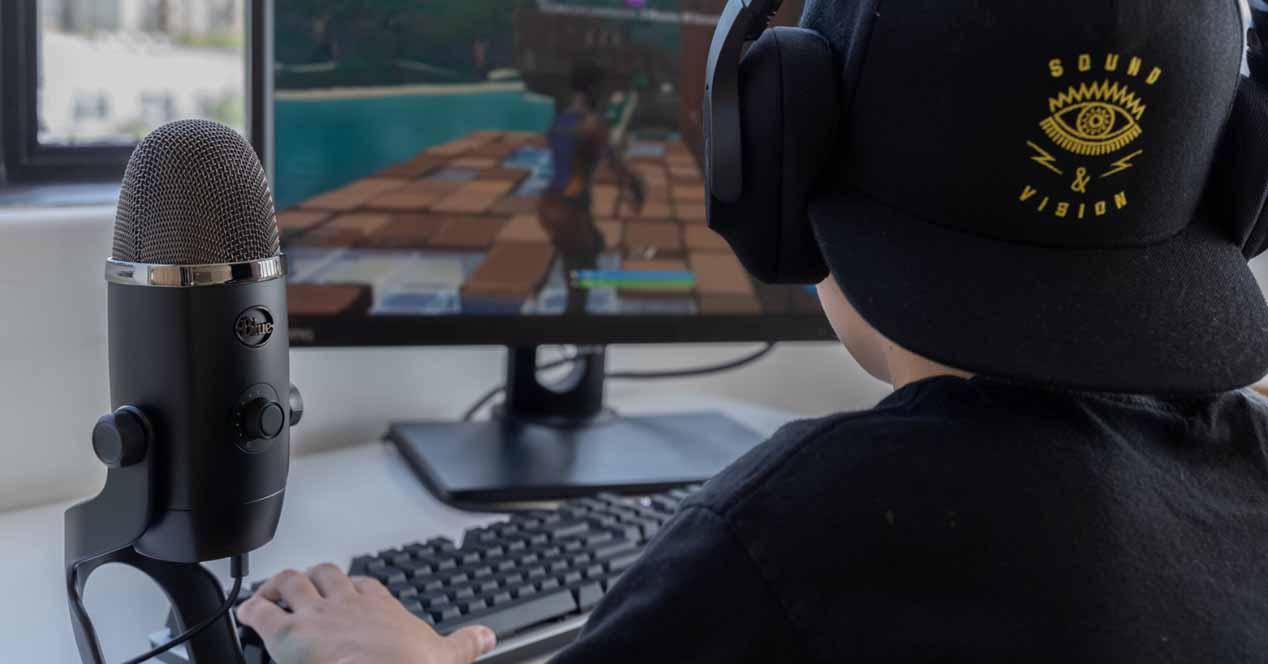Today we have a wide range of possibilities regarding the choice of microphone, since we have from those integrated in the headphones – the most frequent – to professional microphones with XLR connection and mounted on articulated arms, logically passing through the average terms such as table microphones or those integrated into the webcam. Regardless of your microphone type, if keyboard noise “creeps in” as you type in your communications, we’ll tell you what you can do to fix the problem or, at the very least, mitigate it.
What if keyboard noise leaks into the microphone?
Most PC microphones have a pickup pattern defined, although some models have the ability to switch between multiple models. Generally, and especially in low quality or integrated microphones, this pattern is omnidirectional and therefore captures all the sound that surrounds it, so it will be difficult to attenuate the noise generated by the keyboard so that it does not “leak” in the microphone recording.
Change the microphone gain
However, the distance at which the sound is picked up is limited and this is also something that can usually be changed manually. change the gain, either through the controls of the microphone itself if you have one, or through software (although the microphone does not have any software, the sensitivity can be changed even in Windows so whatever make and model you own, you can change the gain).
To access these controls in Windows 10, simply right-click on the speaker icon in the taskbar, next to the clock, and select the “Open sound settings” option. Then in the window that opens, find where the microphone is located and click on the “Device properties” button, where you can find the controls that we show you in the screenshot above these lines. Here the “Volume” is the gain of the microphone, and you can change it at will.
We recommend that you experiment to verify the appropriate gain level to find the perfect balance between picking up your voice and filtering keyboard noise. This will surely only serve to alleviate it and not avoid it altogether, but for that we have the following sections of this article.
Check where you placed it and the pickup pattern
If your microphone is a desktop microphone, you will obviously need to place it on the table and this will allow you to orient it where you want and change its position. One of the downsides of table microphones is that they are quite prone to pick up table vibrations, so pressing the keys on the keyboard can add a lot of noise to the recording, so if this is your case, we recommend that you try different locations to find the perfect balance between picking up your voice and the sound of the recording. keyboard .
Most table microphones have either standard cardioid or they give us the option of choosing between several, the most common being cardioid, stereo, omnidirectional and bidirectional. When you intend to use the microphone for the purpose of capturing only your voice and not the noise you have around you, the most recommended model is unidirectional or, failing that, cardioid (since generally only the microphones integrated into the headphones tend to have unidirectional directivity).
Cardioid polar pattern is particularly good at preventing keyboard noise from seeping into the microphone, as 90% of the sound picked up comes from the front of the microphone at an angle of around 45 degrees, while the remaining 10% is true. . pick up come from the other side. Therefore, if you place the microphone on the side where you point towards your head, keyboard noise should not creep into the recording (as long as the microphone is well designed, that says it all).
If you have a microphone built into the headset and noise from the keyboard is seeping in, make sure it is pointed perfectly towards your mouth and not downward because, as we mentioned earlier, most of these microphones have a unidirectional pattern and only pick up the sounds they have in front of them.
Uses an articulated arm and spider support
Of course, one of the best solutions you’ll find to keep any noise from seeping into the microphone is to purchase or install an articulated arm and spider mount. The articulated arm will allow you to place the microphone in the position you want, including if you want to place it upside down to place it right in front of your mouth and thus capture the best quality of your voice, and that alone will almost totally do eliminate keyboard noise from keys.
The spider mount, on the other hand, serves to have the microphone literally suspended in rubber bands that will absorb any vibrations, not only eliminating keyboard noise but also any bangs you may give on the table or even the noise you are making. can do when moving the articulated arm. Additionally, if you add a pop filter to that, as shown in the image above, you will also eliminate the noise that all humans make when they open their mouths to start speaking (which is why we calls it “pop”).
In fact, this alternative involves an investment of money but it is the best option if what you need is to eliminate all noise around you, including of course keyboard noise. Of course, no matter how much articulating arm or spider mount you have if the microphone has an omnidirectional pickup pattern, you will be hard pressed to get rid of the noises, so make sure you start off that the microphone has the right pattern. selected. and that it is of good quality.
Still with the sound of the keyboard on the microphone?
If after trying all of these tips we’ve given you, keyboard noise continues to creep through your recordings, you may need to consider changing the microphone as a last resort. As we have already mentioned before and although it will not give you the best quality, most of the microphones built into the headphones have a unidirectional pattern and in fact most have noise cancellation so they are without any doubt the best alternative so that you do not make keyboard noise or any other will creep into your recordings.
Obviously spending hours upon hours with headphones with a microphone can be uncomfortable, so if you prefer an external microphone, we recommend that you look for alternatives that are good quality, have a cardioid pattern, or at least allow you to select it and if they have an active noise cancellation system better than better. It requires an investment of money, but if you can’t eliminate keyboard noise in your recordings, then you probably have no alternative.
Table of Contents













